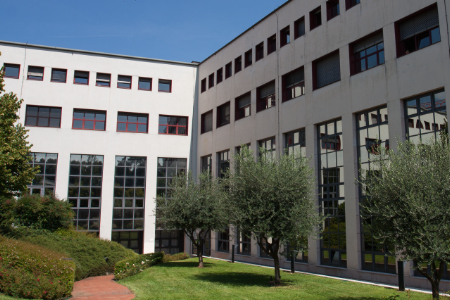- Autori:
-
Moro, Valentina; Pernigo, Simone; Tsakiris, Manos; Avesani, Renato; Edelstyn, Nicola M. J; Jenkinson, Paul M; Fotopoulou, Aikaterini
- Titolo:
-
Motor versus body awareness: Voxel-based lesion analysis in anosognosia for hemiplegia and somatoparaphrenia following right hemisphere stroke
- Anno:
-
2016
- Tipologia prodotto:
-
Articolo in Rivista
- Tipologia ANVUR:
- Articolo su rivista
- Lingua:
-
Inglese
- Formato:
-
A Stampa
- Referee:
-
Sì
- Nome rivista:
- Cortex
- ISSN Rivista:
- 0010-9452
- N° Volume:
-
83
- Editore:
- Masson
- Intervallo pagine:
-
62-77
- Parole chiave:
-
Anosognosia for hemiplegia; Body awareness; Motor awareness; Sense of body ownership; Voxel-based lesion mapping
- Breve descrizione dei contenuti:
- Anosognosia for hemiplegia (AHP) is informative about the neurocognitive basis of motor awareness. However, it is frequently associated with concomitant symptoms, such as hemispatial neglect and disturbances in the sense of body ownership (DSO). Although double dissociations between these symptoms have been reported, there is ongoing debate about whether they are manifestations of independent abnormalities, or a single neurocognitive deficit. We aimed to investigate the specificity of lesions associated with AHP by surpassing four, existing methodological limitations: (a) recruit a relatively large sample of patients (total N = 70) in a multi-centre study; (b) identify lesions associated with AHP in grey and white matter using voxel-based methods; (c) take into account the duration of AHP and concomitant neglect symptoms; and (d) compare lesions against a control hemiplegic group, patients suffering from AHP and DSO, and a few, rare patients with selective DSO. Results indicated that acute AHP is associated with a wide network, mainly including: (1) the Rolandic operculum, (2) the insula and (3) the superior temporal gyri. Subcortically, damage mainly involved the basal ganglia and white matter, mostly the superior corona radiate, arcuate fasciculus and the part of the ventral, superior longitudinal fasciculus. Persistent symptoms were linked with wider damage involving fronto-temporal cortex and long white matter tracts. A shift in the latero-medial direction (mainly involving the basal ganglia and surrounding white matter) emerged when DSO was taken accounted for. These results suggest that while bodily awareness is processed by areas widely distributed across the brain, intact subcortical structures and white matter tracts may be necessary to support basic feelings of owning and controlling contralateral body parts. An accurate and 'up-to-date' awareness of our motor abilities, however, may rely also on intact processing in cortical areas which presumably allow higher-order inferences about the current state of the body.
- Id prodotto:
-
95555
- Handle IRIS:
-
11562/957305
- ultima modifica:
-
13 novembre 2022
- Citazione bibliografica:
-
Moro, Valentina; Pernigo, Simone; Tsakiris, Manos; Avesani, Renato; Edelstyn, Nicola M. J; Jenkinson, Paul M; Fotopoulou, Aikaterini,
Motor versus body awareness: Voxel-based lesion analysis in anosognosia for hemiplegia and somatoparaphrenia following right hemisphere stroke
«Cortex»
, vol.
83
,
2016
,
pp. 62-77
Consulta la scheda completa presente nel
repository istituzionale della Ricerca di Ateneo 








